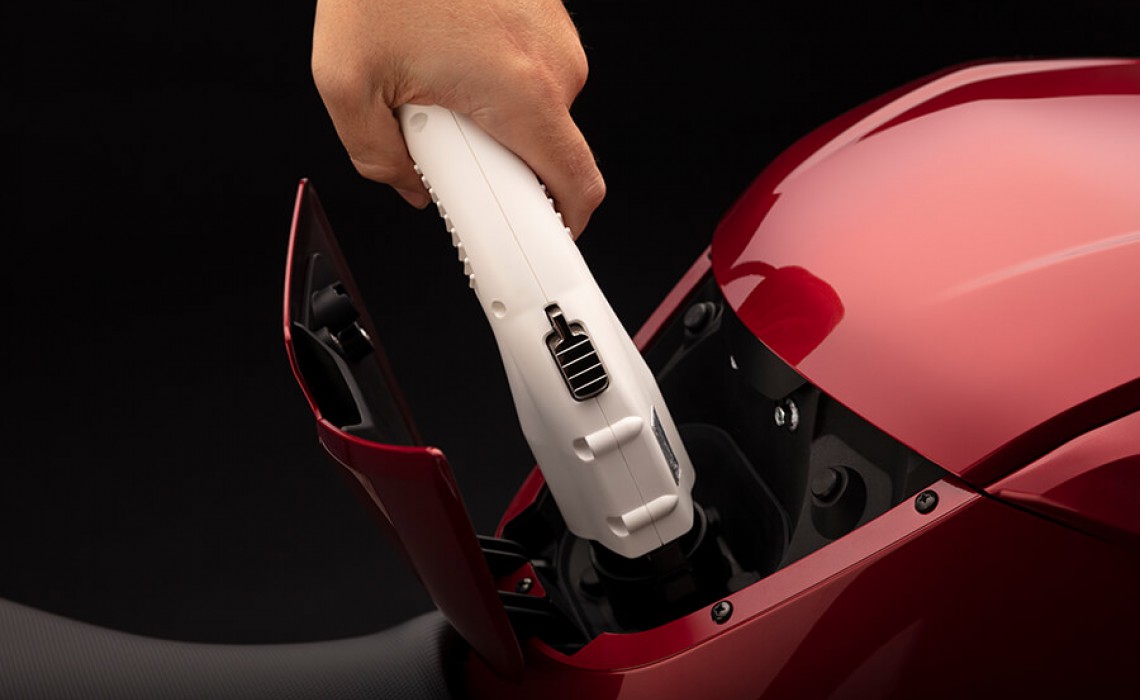How Long Do Lithium-ion Batteries Last?

Overview of Lithium-ion technology?
All electric vehicles use the same Lithium-ion chemistry, with the main differences being the size and quality of the cells used inside the pack and the sophistication of it's Battery Management System (BMS). The BMS is a microprocessor that determines the amount of current supplied to the power pack during charging to prevent overheating. It will also prevent charging if the power pack temperature is too low, and it will limit the amount of power reaching the motor if the pack gets too hot. The BMS also maintains a log of charging cycles and monitors the performance of each block of cells within the power pack. A good BMS will maximise the life of a power pack and a poor BMS will often result in a shortened battery life.
Power Pack Structure
Power packs contain dozens or even hundreds of small cells which are connected in series to achieve the correct pack voltage, and these packs are then connected in parallel to deliver the required current (Amps). The individual cells typically have a nominal voltage of 3.7v but can reach up to 4.2v when fully charged and fall to as low as 3.4v when discharged. Cells frequently have a diameter of 18mm and a length of 65mm, which is known as an 18650 cell. The design of the individual cells is critical to battery performance, as is the quality of the chemicals used and the manufacturing process. Quality assurance is also key as the failure of an individual cell can lead to the failure of an entire power pack. Motorcycle power packs frequently use 18650 cells, which were also used by Tesla in the Model S and X.
Warranty Requirements
In order to qualify for a Government grant a manufacturer or importer of electric motorcycles has to provide a minimum power pack warranty of three years or 30,000 kms, whichever comes first. To meet this commitment a power pack must perform at or asbove 80% of its original capacity at the end of the three-year period. Under the terms of the Government grant, customers should also be offered a warranty extension of two years or 20,000 kms, throughout which the battery should maintain at least 70% of its original capacity.
Power Pack Lifecycle
In practice, the life of a power pack will depend on many factors, including the number of charge cycles, how quickly they're charged, the state of charge during periods of non-usage and battery temperature during both charging and operation. It's also important to point out that the capacity of a Lithium-ion battery is temperature dependent, so performance during winter months can fall by as much as 30% vs its performance during summer months. This is really important when buying an electric vehicle as unless it can comfortably exceed the customer's range requirement during the summer months it will never do so during the winter months!
As a rule of thumb, larger power packs will be better at maintaining performance but in practice we expect Lithium-ion power packs to have a useful lifespan of at least 1000 charging cycles. It therefore follows that if a power pack delivers a range of 25 miles, performance is likely to decline noticeably after 25,000 miles. With an annual mileage of 5,000 miles such a battery would be expected to work effectively for five years. Similarly, if a power pack delivers a range of 100 miles and the annual mileage is 10,000 miles, it's likely to perform well for around 10 years. The key point here is to always get the largest power pack you can afford as it will, quite simply, take you further and last longer.
Zero provides an unlimited mileage power pack warranty of five years with an 80% performance commitment. So, if a power pack delivers less than 80% of its original capacity at any point within the five-year period they'll replace it, irrespective of how many miles the bike has covered. (This performance comparison must always be made at a like for like temperature due to the variations in capacity between warm and cold temperatures.)
As explained above, smaller electric motorcycles should deliver a useful lifespan of at least five years, but it's important to bear in mind that battery capacity is continuously improving and the costs are falling. Consequently, when a power pack reaches end of life it's very likely that any replacement will have a greater capacity and cost considerably less than the original unit.
Caring for Lithium-ion batteries
As a motorcycle is easier to park under cover than a car, it's always a good idea to avoid extremely cold temperatures where possible and to charge and store a power pack at 10c and above. Lithium-ion cells will perform at temperatures between -20c and 60c but as mentioned above, performance will suffer progressively below 10c and charging should be avoided at 5c or below.
When a Lithium-ion battery is in storage it will lose around 0.2% of its charge per day, so about 6% per month. However, when connected to a vehicle the discharge rate will be far greater due to the residual current draw of the vehicle.
During periods of non usage a power pack should be charged to around 60% and checked monthly until the state of charge falls to around 30%, whereupon it should be recovered to 60%.
Under no circumstances allow a power pack at a low state of charge e.g. 10% or less to be stored for long periods, as if the pack is allowed to drop below a theoretical 0% it may become impossible to recover, at which point it would need to be disposed of in an environmentally friendly manner. Lithium-ion power packs cost from £1000 for a 2kWh pack, up to well over £6k for a 14.4 kWh pack, so they're always the most expensive part of an electric vehicle.


